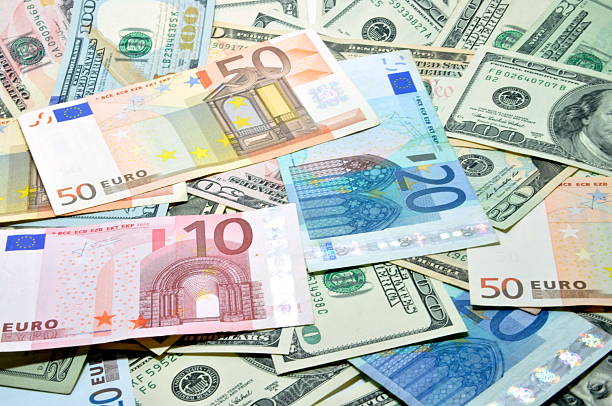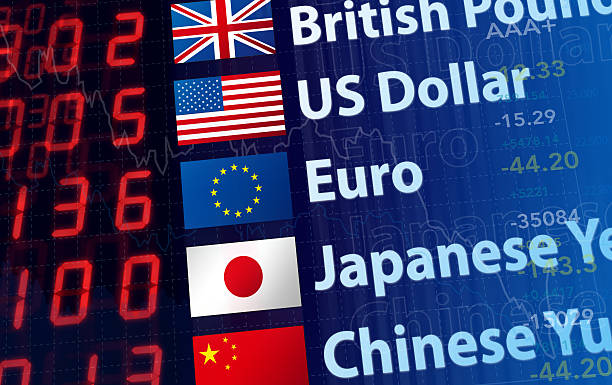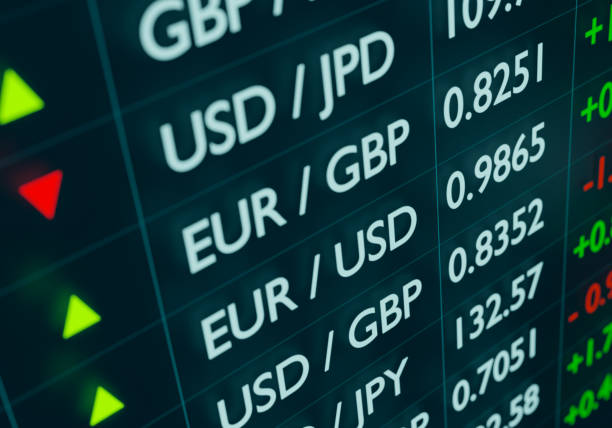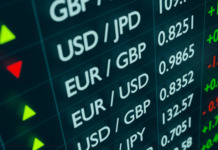If you are new to forex trading, chances are you still hear so many words you are not familiar with, and this can make your learning slow and more complex. There are basic terms every forex trader should know to flow with the market and be able to contribute to conversations like a pro.
We have put together a list of terminologies used in forex trading. The list may not be all-inclusive, but it covers the 30 most common terminologies used in forex trading, so read on to learn and quickly adapt to the world of forex.
See also: Forex vs Crypto, Which is Best for Beginners
Currency
A currency is a standardised system of money in circulation as a medium of exchange in a country. It is used within a specific environment over time. In forex, the world’s currencies are traded, and the forces of supply and demand determine the value of one currency in relation to another. An increase in supply sinks its value, while an increase in demand increases its value.

Currency Pairs
Currency pairs are two currencies that make up an exchange rate in forex; the first is the base currency, and the second is the counter or quote currency. In forex, you can’t trade a single currency; it has to be in currency pairs to create room for value comparison. The most commonly traded currency pairs are EUR/USD, AUD/USD, USD/JPY, and GBP/USD.
Pip
This refers to the smallest unit of measurement when trading in forex; it is usually 1/100th of 1% or 0.0001. For example, if the exchange rate of AUD/USD moves from 1.88123 to 1.88124, this is considered one pip movement.
Bid and Ask Price
The bid price is the highest amount of money a buyer is willing to pay for a currency pair, while the ask price is the lowest amount a seller is willing to accept for a currency pair.
Spread
The spread is the difference between the bid and ask price, expressed as a percentage of the mid-market rate.
Exchange Rate
The exchange rate is the price at which you can exchange one currency for another; it is affected by different factors, including supply and demand, political stability, and economic conditions. Also, the exchange rate can either be fixed or floating. The fixed exchange rate is stable and set by the central bank, while the market determines the floating exchange rate and it can fluctuate occasionally.
Major Pairs
Major pairs are currency pairs that are most commonly traded in forex; they always include the US Dollar and other major currencies; examples include EUR/USD, AUD/USD, USD/JPY, USD/CHF and GBP/USD. They offer low transaction costs and high liquidity to avoid high slippage, and you will also have a much broader market.
Cross Pairs
Cross pairs are two major currency pairs that don’t include the USD. Cross pairs have higher transaction rates compared to the major pairs, and they have low liquidity, so traders have an increased risk of facing slippage.
Exotics
Exotics are currency pairs that are not very common in trading; they are not among the top 10 most traded currencies in the world. They are highly volatile and not recommended for beginners. Examples include the Mexican peso, Czech koruna, and Turkish lira.
Leverage
Leverage is used for trading larger amounts of currencies than you have in your forex trading account; it uses borrowed money to increase your trading power in the forex market.
Margin
Margin is the minimum amount of money you must have in your account before opening a position. It is usually written as a percentage of the total value of the trade; that is, if the margin value is 3%, you must have 3% of the total value of the trade in your account before you can open the position.
Long Position (Buy)
A long position in forex is when a trader buys a currency with the speculation that the value will increase against the currency it is paired with. Then, if the value increases, the trader will close their position and make a profit, but if the value decreases, the trader will close their position and incur a loss.
Short Position (Sell)
A short position is when a trader sells a currency, anticipating the value will fall against the currency it is paired with; when the value falls, the trader will make a profit, but if the value increases, the seller will incur a loss. For example, if a trader thinks the value of USD will decline against Euro, they will sell their Dollars and buy Euros; if the prediction is right, they can return and exchange their Euros for Dollars at a lower price to profit from the difference.

Bear Market
A bear market is one where the prices of currencies fall or decline. It is usually the consequence of a natural disaster or financial crisis.
Bull Market
A bull market is one where the prices of currencies increase; this can result from positive news regarding the global economy.
Lot Size
The lot size in forex refers to the number of currency units traded in a forex position. It can be expressed as a micro lot – 1000 units of the base currency, mini lot – 10,000 units of the base currency, and standard lot -100,000 units of the base currency. These values can help the trader manage risks and ensure the trades are within risk tolerance.
Support
Support is the level on a market’s chart that prices cannot or have never fallen below; each time asset price hits that level, buyers take over, and the market rises again. When an asset drops to the support level at its lowest point, sellers cannot drive the price any lower, and buyers will feel it is the right time to step in, so their actions will create a reversal.
Resistance
Resistance is the opposite of support; it is the area of a market’s chart that has difficulty breaking through to hit new highs. When an asset hits the resistance level, sellers will take over and send the price back down. Resistance levels are also referred to as asset’s ceiling and can appear in bull and bear markets.
Forex Account
A Forex account is the account you will use to hold currencies and simulate trades; you can deposit your home currency in the account and use it to fund your trades in your preferred currency. There are different forex brokers that offer a platform for investors to trade on the market, so find a good one and open a forex account.
Mini Forex Account
This type of forex trading account allows investors to trade smaller quantities of currency pairs; the benefit of this account is that beginners who are not ready to invest too much can use this to practice; it has minimum trade size and margin requirements.
Micro Account
A micro forex account is an account that only allows investors to trade micro lots, which is the lowest unit tradeable for most currency pairs. It is designed for beginners in forex to minimise risk.
Standard Forex Account
A standard Forex account is the primary account for traders; it is designed for standard lot traders and requires a minimum deposit of $1000 before you can open any position; it also offers leverage of 50:1. The rates are slightly higher than mini and micro accounts, but it provides access to more exotic currency pairs.
Sniping and Hunting
Sniping is when a trader tries to start or end a trade at an exact point in price. This is usually before anything significant happens that can cause changes in the market. On the other hand, hunting is when a trader attempts to wait for a good time to enter or exit a trade; they wait for a better price even when what is currently available could yield profits, too.
See also: Forex Trading Scams to Avoid
Stop Loss
A stop loss is an order a trader can give on a trading platform to sell a currency when it reaches a specific price to minimise risks or losses.
Gap
A gap is the difference between the price of a currency pair at the closing of one day and the opening of the following day. It is a sharp upward or downward movement in the price of a currency pair.
Take Profit
Take profit is an order a trader can give on a trading platform to automatically close a position when the market reaches a certain profit level.
Base Currency
Forex trading involves the buying and selling of currency in pairs, so the base currency is the first currency in the pair. For example, EUR is the base currency in a pair like EUR/USD.

Appreciation
Appreciation is when the value of a currency increases in relation to another currency; it can occur when there is an increase in demand for the currency.
Depreciation or Devaluation
Depreciation is when the value of a currency decreases in relation to another currency; it can occur when the supply of the currency is way more than the demand or when the government intentionally lowers the value.
Quote Currency
The quote currency is the second currency in a pair; the first is the base currency, while the second is the quote currency.
See also: What is Hedging in Forex, and how do I use it?
If you were a forex newbie at the beginning of this guide, congratulations, you are now one step closer to becoming an expert. These 30 words are very common in forex trading, and as you learn them, you will have a more seamless trading experience. Also, you won’t be confused when other forex traders talk about their exciting experiences on the market.







